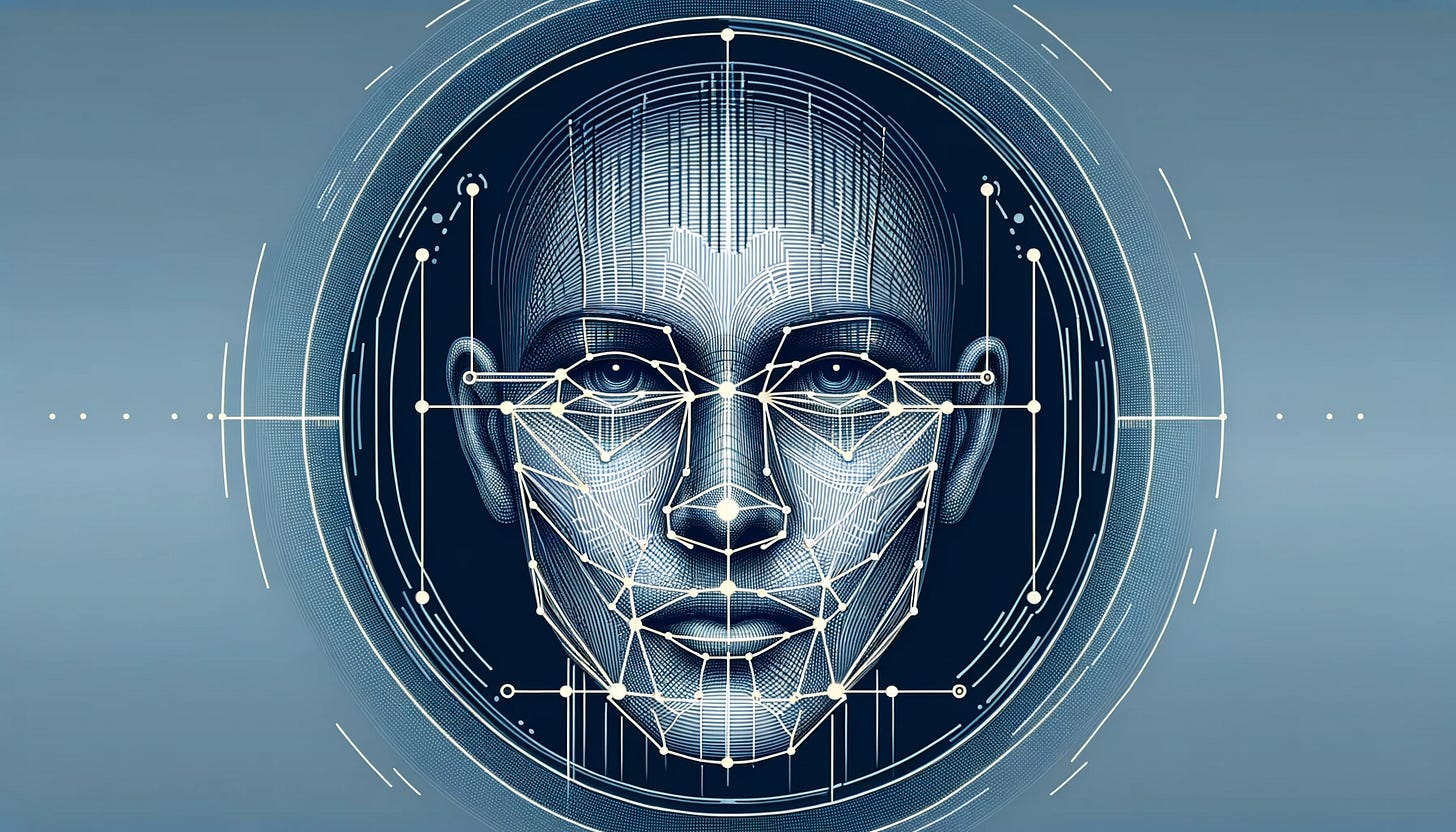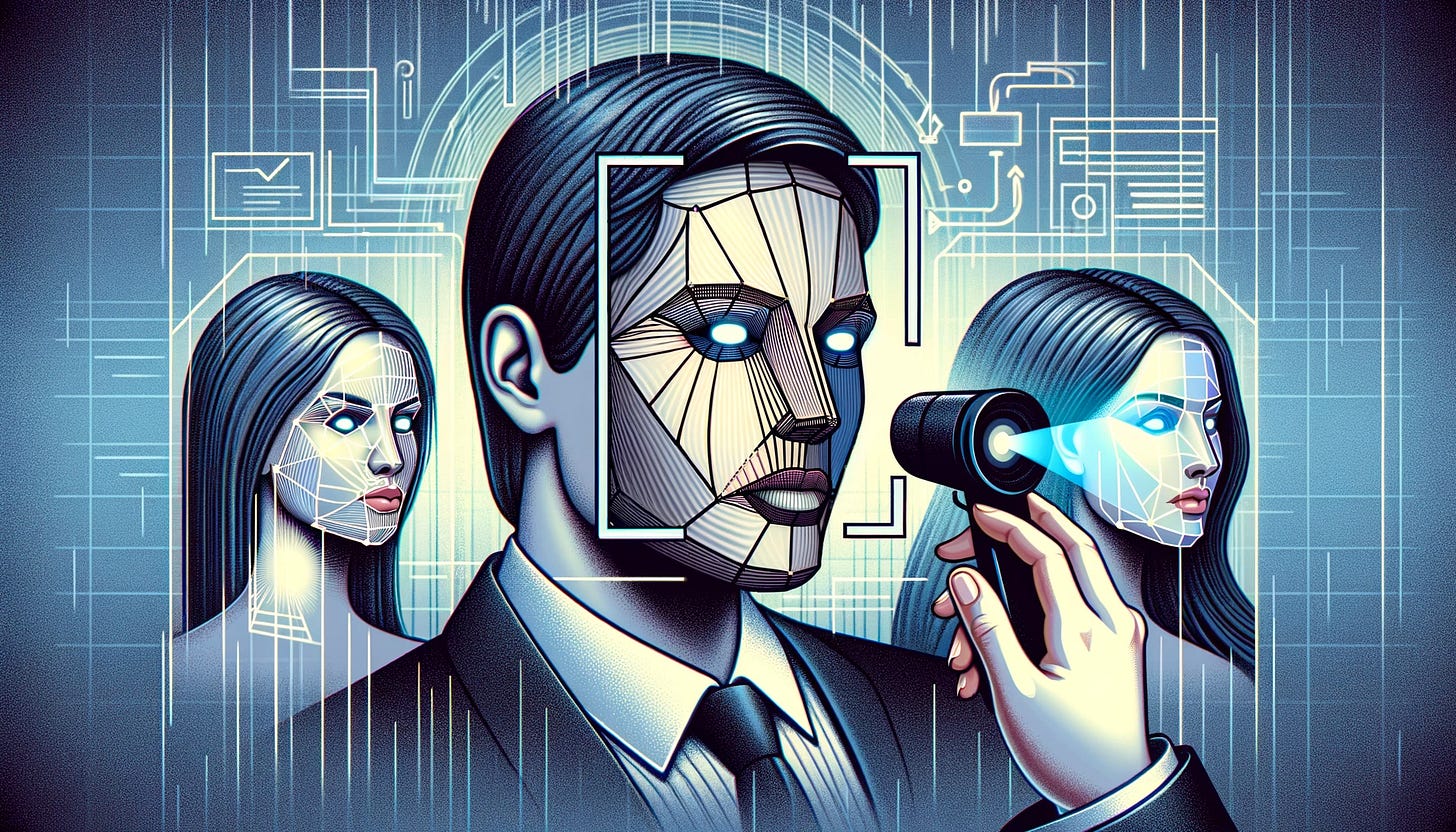How Does Facial Recognition Technology Work?
Unlocking the Secrets Behind Machines that Recognize Faces
Introduction: The Face of Modern Technology
Imagine walking into a room and instantly being recognized by a friend. Now, what if machines could do the same? That's the magic of facial recognition technology – a fascinating blend of science and software that allows machines to identify or verify a person just by looking at their face.
Facial Recognition: Like a Friend Who Never Forgets a Face Facial recognition technology is like having a friend with an incredible memory for faces, but in digital form. Just as you might recognize a friend by their eyes, nose, or smile, this technology uses specific features of a face to identify a person. It's a bit like piecing together a puzzle, where each facial feature is a unique piece.
Everyday Encounters with Facial Recognition You might have encountered facial recognition when unlocking your smartphone with a glance or passing through automated passport control at the airport. These are everyday examples of how this technology is becoming a regular part of our lives.
A Blend of Art and Science What makes facial recognition fascinating is how it blends art – the unique features of a human face – with the science of algorithms and computing. It's a perfect example of how technology is mimicking human abilities, taking something as natural as recognizing a face and translating it into a language computers understand.
In this post, we'll explore how facial recognition technology works, its applications, and the questions it raises about privacy and ethics. So, let's dive into the world where technology meets the human face!
Understanding the Basics
Facial Recognition: A Digital Version of a Human Skill Facial recognition technology might seem like a complex concept, but at its core, it's not so different from how we, as humans, recognize each other. Just as you might identify a friend by their features – say, the color of their eyes, the shape of their nose, or their smile – facial recognition systems use similar cues to identify individuals.
The Art of Digital Recognition When a facial recognition system 'sees' a face – whether through a camera on a phone, a security system, or any other digital device – it does something quite similar to what your brain does. It looks at the key features of the face. These are not just the eyes, nose, and mouth, but also more subtle aspects like the distance between the eyes, the contour of the cheekbones, or the shape of the jawline.
From Image to Data The real magic happens in how these systems process what they see. Unlike humans, who might remember a face as an image or a feeling, these systems convert the facial features into digital data. Think of it like translating a picture into a language that computers understand – a series of numbers or a digital code.
Finding a Match Once a system has this digital 'map' of a face, it can compare it to other maps stored in its database. If it finds a match – much like when you recognize a friend in a crowd – it can confirm the identity of the person. This process is lightning-fast and is becoming increasingly accurate as technology evolves.
In essence, facial recognition technology replicates and enhances one of our innate human abilities, transforming the art of recognizing faces into a precise and useful digital tool.
The Technology Behind Facial Recognition
A Symphony of Algorithms and Patterns Facial recognition may seem like magic, but it's actually a sophisticated concert of algorithms and patterns working together. This technology relies heavily on pattern recognition — a type of machine learning that teaches a computer to recognize and understand the patterns in facial features.
Algorithms: The Brain of Facial Recognition An algorithm in facial recognition acts like a detective. It scans a face and looks for key features known as nodal points. These points include numerous aspects of the face, such as the distance between the eyes, the shape of the cheekbones, and the contours of the lips. Each human face has about 80 nodal points, which the algorithm analyzes to creliate a facial signature.
Pattern Recognition: Identifying Unique Facial Patterns Pattern recognition comes into play when the system must distinguish one person's face from another. By comparing the specific patterns of a person's facial features against a database, the system can identify unique identifiers. It's like recognizing a friend in a crowd by their specific characteristics.
Machine Learning: The System That Learns to See The more a facial recognition system is used, the smarter it gets, thanks to machine learning. It learns through experience, improving its ability to recognize faces over time. Machine learning algorithms adjust and become more accurate by continually analyzing new data and making adjustments to the recognition patterns.
Key Steps in Facial Recognition Process
Facial recognition is not just one action but a series of steps that together create a secure and accurate identification system. Let's break down this complex dance into its fundamental stages:
Detection: The First Encounter
The process begins with detection, where the system locates a face within an image or video. It's like playing 'Where's Waldo?' but for faces. The system scans the visual field to find the patterns that match what it knows to be a human face.
Analysis: Understanding the Face
Once a face is detected, the system analyzes it. It's a bit like sketching out the major landmarks on a map. The system notes key features — the distance between the eyes, the shape of the chin, the contour of the cheekbones — all of which will help to distinguish this face from millions of others.
Conversion to Data: The Digital Blueprint
After analysis, the system converts the facial landmarks into a digital format. Imagine translating a song into sheet music. Similarly, the system translates the facial features into a numerical code that becomes its unique signature in the database.
Matching: Finding the Face's Twin
The final step is matching. The system takes the newly created digital blueprint and compares it against a database of known faces. If it finds a match — much like finding the exact pair in a game of Memory — it confirms the identity of the person.
These steps are executed in seconds, showcasing the incredible power and efficiency of facial recognition technology. It's a process that combines the immediacy of human recognition with the precision of machine calculation.
Accuracy and Challenges
Aiming for Perfection: The Quest for Accuracy Facial recognition systems strive for high accuracy, but like any technology, they're not flawless. Achieving perfect recognition every time is the gold standard. Think of it as trying to hit a bullseye in darts in varying conditions. When the conditions are ideal, facial recognition systems can be incredibly precise, matching faces with remarkable accuracy.
The Challenge of Conditions: Lighting and Angles However, certain factors can throw the system off, much like trying to hit that bullseye in a gusty wind. Lighting conditions play a huge role; too much or too little light can obscure the facial features that the system relies on. Similarly, the angle at which a face is presented to the camera can affect recognition. If the system is trained on full-face photos, a side profile might not match as accurately.
Overcoming Obstacles: Enhancing the Technology The good news is that as technology advances, so does the robustness of facial recognition systems. They're getting better at recognizing faces in less-than-ideal conditions. Engineers and developers are constantly refining algorithms to handle a wider variety of lighting situations and angles, much like a darts player learning to account for the wind.
The Bigger Picture: Broader Challenges Beyond just lighting and angles, facial recognition faces broader challenges. There's the matter of personal changes over time, like growing a beard or wearing glasses. Then there are ethical considerations and concerns about privacy and consent. The technology must navigate these issues carefully, ensuring it serves the public good while respecting individual rights.
In conclusion, while facial recognition technology is advancing rapidly, it's a balancing act between improving accuracy and addressing the challenges it faces, both technical and ethical.
Privacy and Ethical Concerns
Navigating the Privacy Maze One of the most significant concerns with facial recognition technology is privacy. Imagine walking down the street, unaware that cameras are identifying you and tracking your every move. This scenario raises important questions about consent and personal privacy. Who has the right to your facial data? How is it being used, stored, or shared? The idea of being constantly watched and identified by machines can feel like an invasion of privacy, a concern that is at the forefront of debates about facial recognition technology.
Ethical Dilemmas: Bias and Misuse Another critical issue is the potential for bias and misuse. Like any tool, facial recognition can be used for both good and bad purposes. There's the risk of it being used for unwarranted surveillance, profiling, or even in ways that infringe on civil liberties. Additionally, if the data used to train these systems is biased — say, it includes more faces from one demographic than another — the system itself may develop biases. This can lead to inaccuracies, such as misidentifying individuals, which can have serious consequences.
Striking a Balance Balancing the benefits of facial recognition with these privacy and ethical concerns is a complex challenge. It requires clear regulations, transparency from those developing and using the technology, and ongoing dialogue about its implications. As we integrate this technology into more aspects of our lives, ensuring it's used responsibly and ethically becomes increasingly important.
In conclusion, while facial recognition offers significant advantages, it also brings with it serious considerations about privacy, ethics, and fairness. Addressing these concerns is crucial in shaping a future where technology and personal rights coexist harmoniously.
Conclusion: The Evolving Face of Technology
As we conclude our exploration of facial recognition technology, it's clear that this tool is not just a fleeting trend but a significant milestone in the evolution of technology. It embodies the remarkable journey from science fiction to everyday reality, highlighting the incredible capabilities and complexities of modern tech.
A Technology Reshaping Our World Facial recognition has already begun to reshape various aspects of our lives. From enhancing security and streamlining processes to personalizing experiences, its impact is widespread. It's a technology that mirrors our own innate abilities, yet amplifies them with the speed and accuracy that only machines can offer.
The Balancing Act: Potential and Responsibility With great power comes great responsibility. As facial recognition technology continues to advance, the balance between harnessing its potential and addressing its challenges becomes more crucial. Issues of privacy, ethics, and accuracy remain at the forefront, demanding ongoing attention and thoughtful solutions.
Looking Ahead: A Future Integrated with Technology The future landscape of technology will undoubtedly be interwoven with facial recognition in ways we are only beginning to imagine. From its integration into everyday devices to its potential role in emerging fields like augmented reality and the Internet of Things, the possibilities are as vast as our capacity for innovation.
In essence, facial recognition technology is not just changing the way we interact with machines; it's redefining the boundaries between the digital and physical worlds. It's a testament to human ingenuity and a reminder of the ever-evolving face of technology in our lives.








